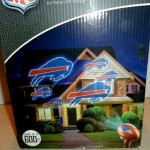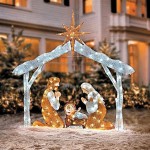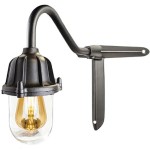Residential Outdoor Lighting Regulations in Los Angeles County
Los Angeles County, like many urban and suburban regions, has implemented regulations concerning residential outdoor lighting. These regulations aim to balance safety and security concerns with the need to mitigate light pollution, conserve energy, and protect the natural environment. Understanding these rules is crucial for homeowners, contractors, and developers to ensure compliance and contribute to a more sustainable and visually pleasant community.
The regulations governing residential outdoor lighting in Los Angeles County are typically found within the County's building codes and municipal codes. These codes address various aspects of outdoor lighting, including permissible light levels, shielding requirements, light color temperature, and allowable operating hours. It's essential to consult the specific ordinances applicable to the unincorporated areas of Los Angeles County or the incorporated city where the property is located, as regulations can vary between jurisdictions. Some cities within the county may have stricter rules than the county's general provisions.
Failure to comply with these regulations can result in warnings, fines, and even requirements to modify or replace non-compliant lighting fixtures. Therefore, it is prudent to familiarize oneself with the local requirements before installing or modifying any outdoor lighting systems.
Key Point 1: Light Trespass and Shielding Requirements
A primary concern addressed by Los Angeles County's outdoor lighting regulations is light trespass, which refers to unwanted light that spills onto neighboring properties. Light trespass can disrupt sleep patterns, reduce the enjoyment of outdoor spaces, and interfere with astronomical observations. To minimize light trespass, the regulations often mandate specific shielding requirements for outdoor lighting fixtures.
Shielding refers to the design of a light fixture that prevents light from being emitted directly upward or horizontally. Full cutoff fixtures, which are typically required in many areas, emit light only downward, eliminating glare and light pollution above the horizontal plane. These fixtures ensure that light is directed where it is needed, such as illuminating walkways or driveways, without shining into the night sky or onto neighboring properties.
The regulations may specify the types of fixtures that are permitted based on their shielding characteristics. For example, unshielded or partially shielded fixtures that emit light in all directions may be prohibited or restricted. The use of shielded fixtures is often required for all outdoor lighting, including porch lights, security lights, and landscape lighting. The specific requirements may vary depending on the wattage or lumen output of the fixture and the zoning district in which the property is located.
In addition to shielding, the regulations may also address the aiming of outdoor lights. Aiming lights downward and away from neighboring properties can further reduce light trespass and minimize glare. Consideration should be given to the placement of lights to avoid shining directly into windows or creating bright spots that could disrupt nighttime activities.
Homeowners are encouraged to select lighting fixtures that are specifically designed to minimize light trespass and to install them in accordance with the manufacturer's instructions. This may involve adjusting the angle of the fixture or using accessories such as visors or hoods to further direct the light downward. By adhering to these shielding and aiming requirements, residents can contribute to a more neighborly and environmentally friendly community.
Key Point 2: Light Levels and Lumen Output Restrictions
Another crucial aspect of Los Angeles County's residential outdoor lighting regulations pertains to the permissible light levels and lumen output of outdoor lighting fixtures. The regulations typically aim to prevent excessive brightness that can cause glare and disrupt nighttime visibility. This is achieved by limiting the total amount of light that can be emitted from outdoor fixtures and by setting maximum allowable light levels at property lines.
Lumen output refers to the total amount of light emitted by a light source. Regulations may specify maximum lumen outputs for different types of outdoor lighting fixtures, such as porch lights, security lights, and landscape lights. These limits are often based on the size of the property and the zoning district in which it is located.
In addition to lumen output restrictions, the regulations may also address the illuminance levels at property lines. Illuminance refers to the amount of light that falls on a surface, typically measured in foot-candles or lux. The regulations may specify maximum illuminance levels that are allowed at the property line, ensuring that light from one property does not spill onto neighboring properties at excessive levels.
To comply with these light level and lumen output restrictions, it is essential to select lighting fixtures that are appropriately sized for the intended application and to install them in a manner that minimizes glare and light trespass. This may involve using lower wattage bulbs or selecting fixtures with adjustable light levels. Dimming capabilities can be particularly useful, allowing homeowners to reduce the brightness of outdoor lights when full illumination is not needed.
Furthermore, the regulations may address the use of motion-activated security lights. While these lights can be effective in deterring crime, they can also be a source of light pollution and nuisance if they are triggered too frequently or if they are too bright. The regulations may specify restrictions on the sensitivity and duration of motion-activated lights, as well as limitations on their lumen output.
By adhering to these light level and lumen output restrictions, residents can help to create a more comfortable and visually appealing nighttime environment, while also conserving energy and reducing light pollution.
Key Point 3: Light Color Temperature and Energy Efficiency
In recent years, Los Angeles County's outdoor lighting regulations have increasingly focused on light color temperature and energy efficiency. These considerations aim to promote more environmentally friendly lighting practices and to minimize the negative impacts of artificial light on human health and wildlife.
Light color temperature refers to the color appearance of light, measured in Kelvin (K). Lower color temperatures, such as 2700K or 3000K, produce a warm, yellowish light, while higher color temperatures, such as 4000K or 5000K, produce a cool, bluish-white light. Studies have shown that exposure to blue light at night can disrupt sleep patterns and suppress melatonin production, a hormone that regulates sleep and other bodily functions.
To mitigate these effects, the regulations may specify maximum allowable color temperatures for outdoor lighting fixtures. Typically, regulations favor warm-toned light sources (lower Kelvin values). This reduces the amount of blue light emitted into the environment. Some jurisdictions may prohibit the use of high-color-temperature lights, such as those with color temperatures above 3000K, particularly in residential areas.
In addition to color temperature, the regulations may also address energy efficiency. Energy-efficient lighting technologies, such as light-emitting diodes (LEDs), consume less energy than traditional incandescent or halogen bulbs. They also have a longer lifespan, reducing the need for frequent replacements. The regulations may encourage or require the use of energy-efficient lighting fixtures in outdoor applications. Some areas may offer rebates or incentives for homeowners who upgrade to energy-efficient lighting systems.
Choosing energy-efficient lighting and warm color temperatures not only complies with regulations but also benefits the environment. Reducing energy consumption helps to minimize greenhouse gas emissions and conserve natural resources. Using warm-toned light sources helps to protect human health and wildlife from the negative impacts of blue light pollution.
Furthermore, many LED fixtures offer features such as dimming capabilities and adjustable color temperatures. This allows homeowners to customize their outdoor lighting to suit their specific needs. This is particularly useful in areas where strict regulations are enforced. Smart lighting systems can be programmed to automatically adjust the brightness and color temperature of outdoor lights based on the time of day or other factors.
By embracing energy-efficient lighting and selecting appropriate color temperatures, Los Angeles County residents can contribute to a more sustainable and healthier community.
In summary, residential outdoor lighting regulations in Los Angeles County address light trespass, shielding requirements, lumen output restrictions, light color temperature, and energy efficiency. Compliance with these regulations is essential for homeowners, contractors, and developers to ensure a balance between safety, security, and environmental responsibility. Consulting the relevant county and municipal codes is crucial for understanding the specific requirements in any given location.
Csd Modifications The Ordinance Modifies Specific Community Standards Districts Leona Valley Acton Santa Monica Mountains N
Csd Modifications The Ordinance Modifies Specific Community Standards Districts Leona Valley Acton Santa Monica Mountains N
Csd Modifications The Ordinance Modifies Specific Community Standards Districts Leona Valley Acton Santa Monica Mountains N

The Rural Blog Los Angeles County May Protect Dark Night Skies

Landscape And Outdoor Lighting In Hollywood Florida

Ventura County Outdoor Lighting Restrictions Resource Management Agency

Common Zoning Violations La County Planning

Ojai Valley Dark Sky Ordinance Frequently Asked Questions Ventura County Resource Management Agency

Ventura County Outdoor Lighting Restrictions Resource Management Agency

Light Pollution Ordinance Expanded To Include Single Family Homes In Oceanside San Diego Union Tribune
Related Posts







